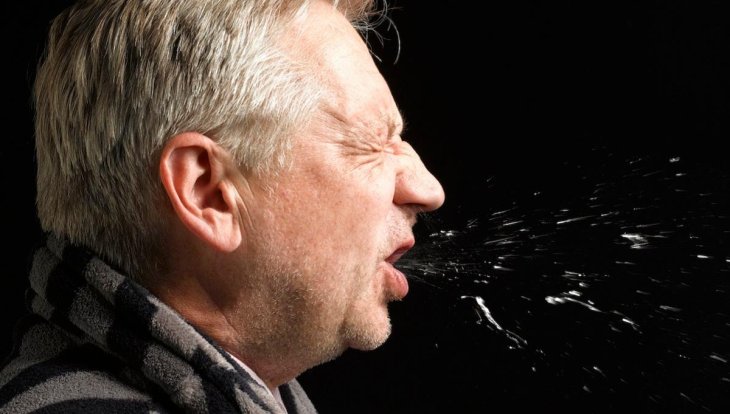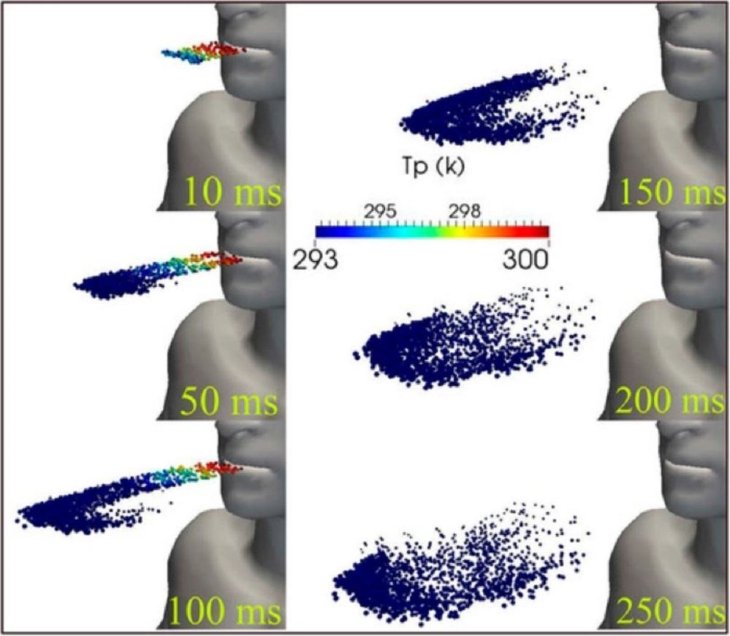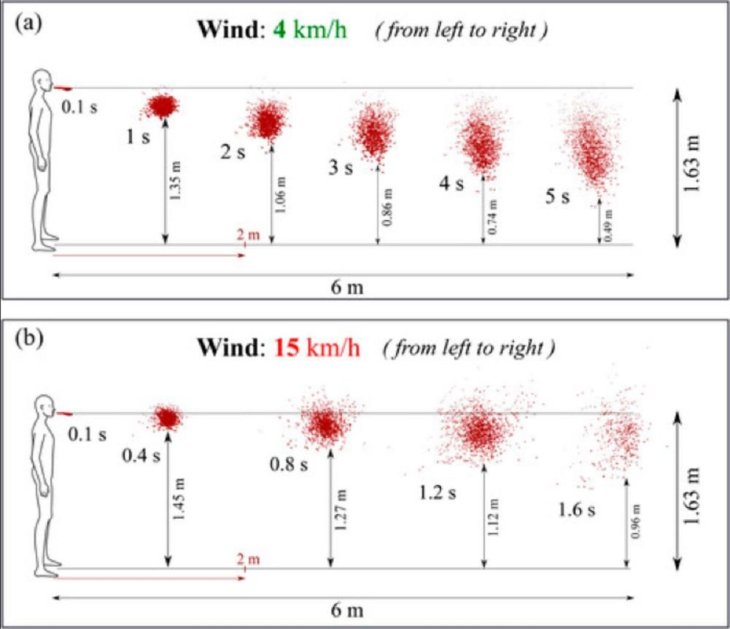When You Cough, How Far Can The Coronavirus Go?
Dhir Acharya - May 25, 2020

To understand how far the coronavirus can go when someone coughs, we need to know how particles travel in the air. And a 2-meter distance is not enough.
- This Man's Super-Antibody Can Be Diluted 10,000 Times But Still Works Against COVID-19
- These Indian Cities Are Under Lockdown Again In 2021
- India To Review Covishield Vaccine After Report Of Blood Clots Following Vaccination
Many of us are still in the dark of virus transmission in the air, and a good way to understand this is knowing how particles travel in the air when someone coughs.

Dimitris Drikaris and Talbi Dbouk from the University of Nicosia in Cyprus conducted an experiment on this matter and found that even a light breeze at 4km/h and bring saliva droplets to as far as 6 meters in 5 seconds. A breeze at 15km/h can take particles that far in only 1.6 seconds. Drikakis says:
“The droplet cloud will affect both adults and children of different heights. Shorter adults and children could be at higher risk if they are located within the trajectory of the traveling saliva droplets.”
Saliva is a complex fluid that travels suspended with air released from a cough, according to the researchers.

Several factors affecting how saliva travels include the number and size of the droplets, how the droplets interact with the surrounding air and with each other when dispersing and evaporating, how mass and heat are transferred, as well as the temperature and humidity of the surrounding air.
To have a closer study about the movement of saliva, the two researchers generated a computational fluid dynamics simulation to examine the state of all saliva droplets that move through the air in front of a coughing person.
The factors taken into account are dispersion force, humidity, how the droplets turn into vapor and evaporate, and interactions of saliva molecules and air.

According to the researchers, in this simulation, the computational domain is a grid that represents the space in front of the coughing person. They ran partial differential equations with 1008 droplets and solved a total of 3.7 million equations.
In each cell, there is information on droplet position, droplet mass, temperature, fluid velocity, pressure, among other variables. The aim of modeling and simulation is to consider every real coupling and interaction mechanism that may happen between the saliva droplets and the main bulk fluid flow, as well as between the droplets.
The findings of this study point out a fact that social distancing with a 2-meter distance is simply not enough. That highlights the importance of self-quarantine and lockdowns during the COVID-19 pandemic.
Featured Stories

Features - Jan 23, 2024
5 Apps Every Creative Artist Should Know About

Features - Jan 22, 2024
Bet365 India Review - Choosing the Right Platform for Online Betting

Features - Aug 15, 2023
Online Casinos as a Business Opportunity in India

Features - Aug 03, 2023
The Impact of Social Media on Online Sports Betting

Features - Jul 10, 2023
5 Most Richest Esports Players of All Time

Features - Jun 07, 2023
Is it safe to use a debit card for online gambling?

Features - May 20, 2023
Everything You Need to Know About the Wisconsin Car Bill of Sale

Features - Apr 27, 2023
How to Take Advantage of Guarantee Cashback in Online Bets

Features - Mar 08, 2023
White Label Solutions for Forex

Review - Jul 15, 2022
Comments
Sort by Newest | Popular